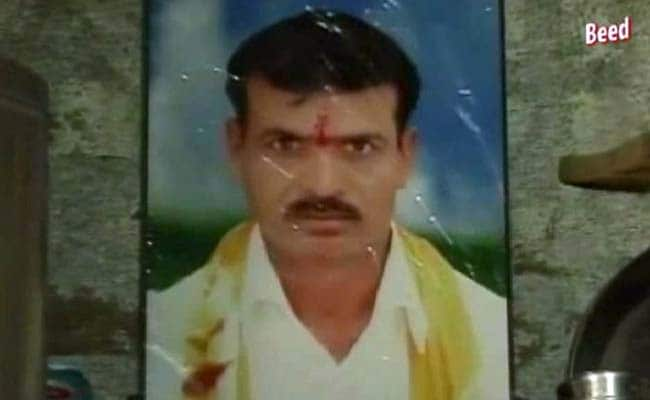Since June, an occasional drizzle is all that's added to the landscape.
With less than 50 per cent rain this monsoon, the agrarian crisis in the drought-prone Marathwada region of Maharashtra has further deepened. At the heart of the crisis is a spurt in farmer suicides.
From 47 farmer deaths every month until December, when the Congress and NCP were in power, official figures for the first eight months of 2015 show say that about 69 farmers have killed themselves every month in Marathawada's eight districts. If only those eligible for compensation are taken into account then too the suicide rate has risen from 36 to 44 for 2014 and 2015 respectively.
The BJP-Shiv Sena government accepts the situation is dire but says it's not about a "number game".
"People with play with numbers," Women and Child Welfare Minister Pankaja Munde explains, pointing fingers at the opposition. "But it's not possible to stop suicides all of a sudden. How can we be expected to do in six months what Congress didn't do in 60 years?"
Munde's home district of Beed is where maximum numbers of farm suicides have taken place. Sahadev Hingole was just 42 years old when he hung himself from a tree earlier this year after his crop failed in Kolharwadi village.
 "He was tense as he didn't know how he would repay the Rs 2 lakh loan he taken," his son Keshav explains as his two sisters and mother sit in the darkness of their home.
"He was tense as he didn't know how he would repay the Rs 2 lakh loan he taken," his son Keshav explains as his two sisters and mother sit in the darkness of their home.
Farmers have already sown 38 lakh hectares after the first spell of rain in June. Since then, an occasional drizzle is all that's added to the landscape.
"We believe this problem is caused by God and we shouldn't play politics. But we want the government to waive off farm loans as immediate relief," Mr Munde's estranged cousin and NCP legislator Dhananjay Munde said.
Activists and water experts have however called the calamity more "man-made than natural" given the massive Rs 70,000 crore irrigation scam during the Congress-led government and wrong policy decisions.
Usable water levels in Marathawadas 814 dams have hit a low with just 7 per cent. In August 2014, the available water was a healthier 16 per cent. The administration is providing tankers for drinking water.
From 47 farmer deaths every month until December, when the Congress and NCP were in power, official figures for the first eight months of 2015 show say that about 69 farmers have killed themselves every month in Marathawada's eight districts. If only those eligible for compensation are taken into account then too the suicide rate has risen from 36 to 44 for 2014 and 2015 respectively.
The BJP-Shiv Sena government accepts the situation is dire but says it's not about a "number game".
"People with play with numbers," Women and Child Welfare Minister Pankaja Munde explains, pointing fingers at the opposition. "But it's not possible to stop suicides all of a sudden. How can we be expected to do in six months what Congress didn't do in 60 years?"
Munde's home district of Beed is where maximum numbers of farm suicides have taken place. Sahadev Hingole was just 42 years old when he hung himself from a tree earlier this year after his crop failed in Kolharwadi village.

Sahadev Hingole was just 42 years old when he hung himself from a tree earlier this year.
Farmers have already sown 38 lakh hectares after the first spell of rain in June. Since then, an occasional drizzle is all that's added to the landscape.
"We believe this problem is caused by God and we shouldn't play politics. But we want the government to waive off farm loans as immediate relief," Mr Munde's estranged cousin and NCP legislator Dhananjay Munde said.
Activists and water experts have however called the calamity more "man-made than natural" given the massive Rs 70,000 crore irrigation scam during the Congress-led government and wrong policy decisions.
Usable water levels in Marathawadas 814 dams have hit a low with just 7 per cent. In August 2014, the available water was a healthier 16 per cent. The administration is providing tankers for drinking water.
Track Latest News Live on NDTV.com and get news updates from India and around the world

